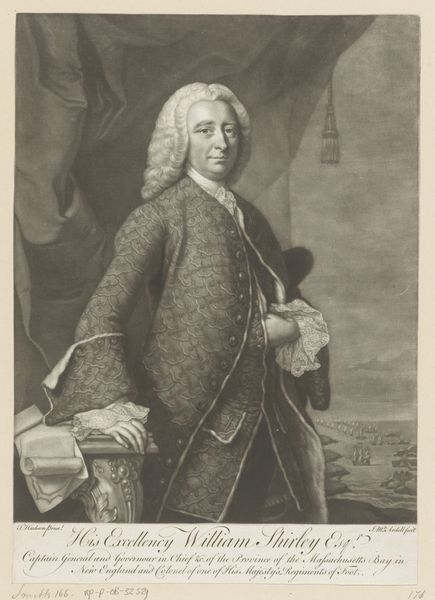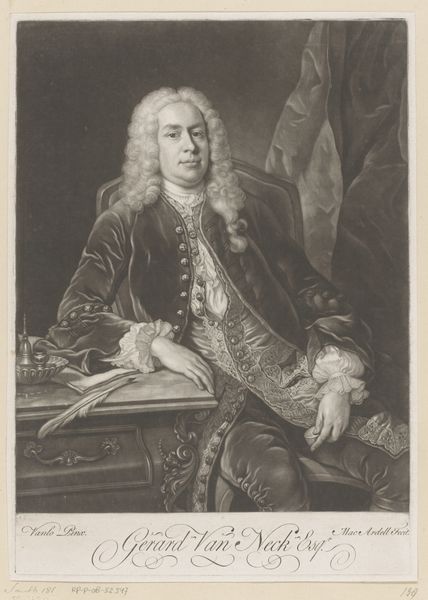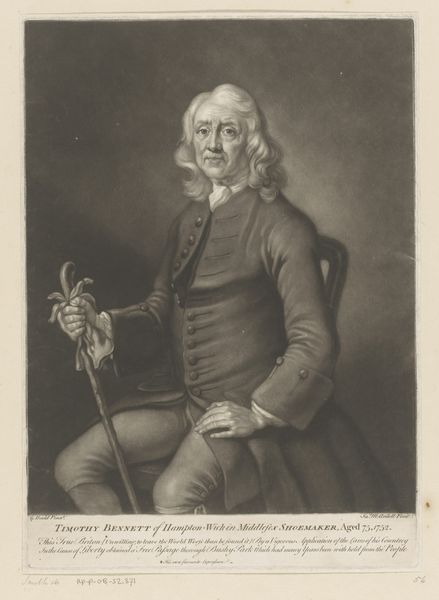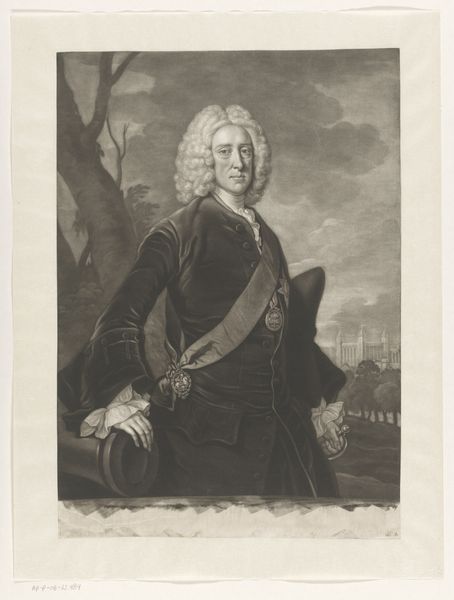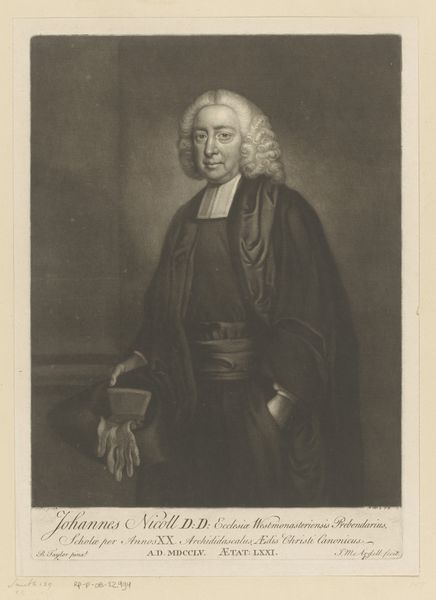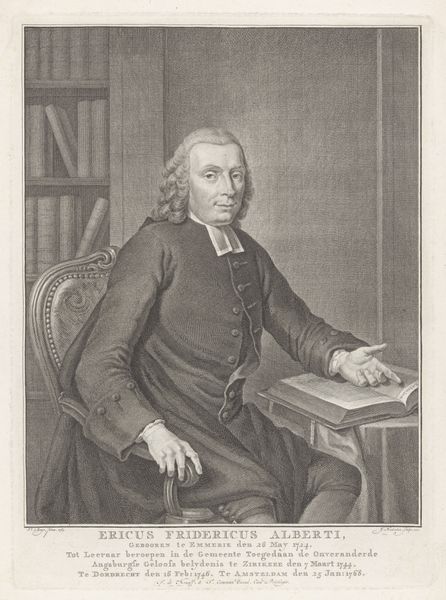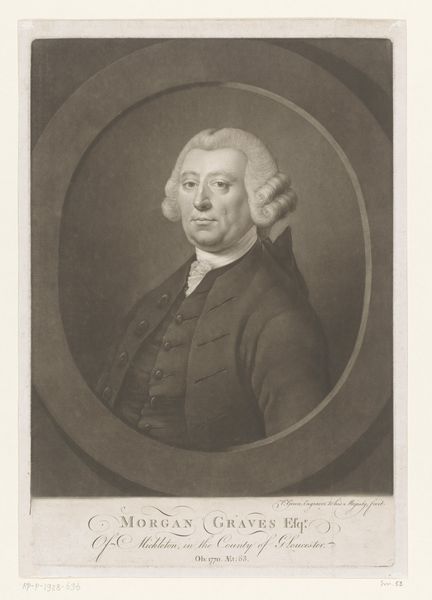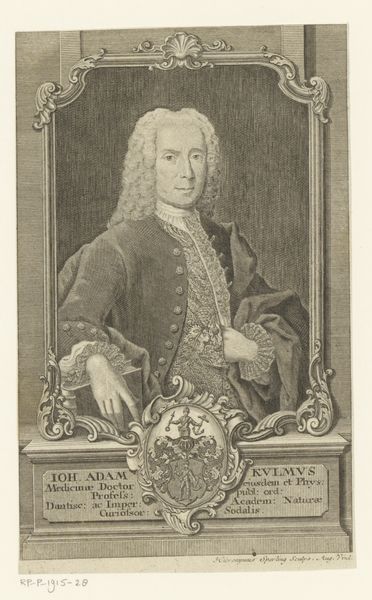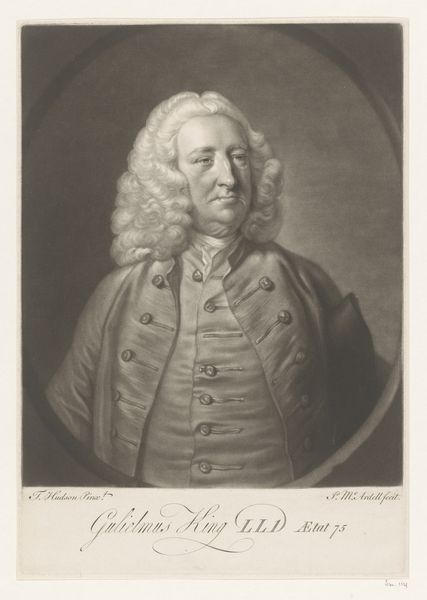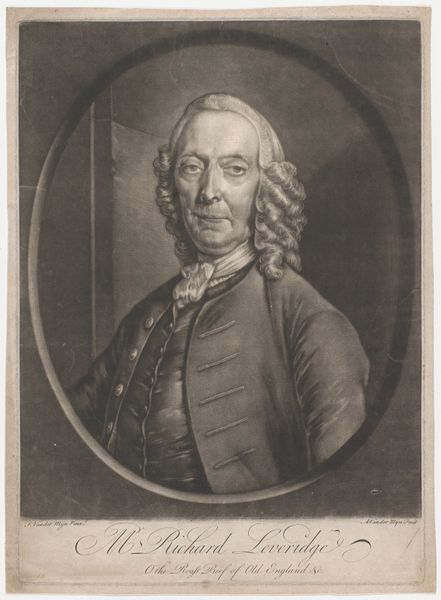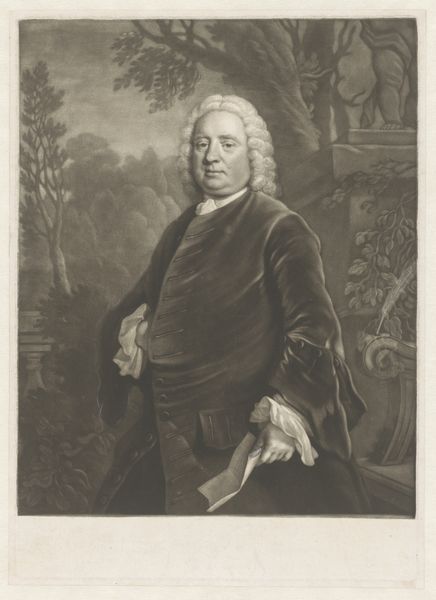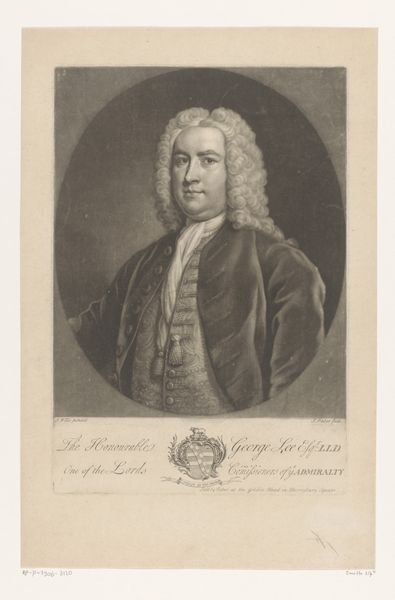
#
wedding photograph
#
photo restoration
#
low key portrait
#
portrait image
#
historical photography
#
portrait reference
#
yellow element
#
19th century
#
portrait drawing
#
fine art portrait
Dimensions: height 352 mm, width 249 mm
Copyright: Rijks Museum: Open Domain
Curator: Here we have James McArdell's "Portret van Samuel Richardson of Zachary Hamlyn," dating from 1752. It resides here at the Rijksmuseum. Editor: He seems rather pleased with himself, doesn't he? There's an almost theatrical quality to the pose. That enormous wig... quite a statement. Curator: It certainly speaks of a certain status, doesn't it? Look at the material of his coat, how McArdell renders the light catching the fabric. He emphasizes texture as much as form. Editor: Yes, you can almost feel the velvet—or whatever sumptuous material it is. What was the printing process used to achieve this range of tones? It's remarkable. It really brings forth what raw materials went into his garments! I find my attention drifting less to who is and rather to the making of his coat. How does the social standing of someone in McArdell's time afford such access to finery? Curator: The printmaking technique itself, called mezzotint, was quite laborious, relying on roughening the plate and then selectively burnishing it to create highlights. So, in a way, McArdell's work parallels the labor involved in producing those textiles, just on a different scale and of course, with drastically differing outcomes. Editor: It makes me think about the market for luxury goods then, and the artistic labor required to depict it. Was this portrait meant for private enjoyment, or wider distribution? The act of portraiture always speaks to a wish to immortalize oneself but does it matter whether they commissioned it, or someone wanted it? I wonder about its journey through various hands. Curator: We can’t know for certain, but given the printing process, it suggests a desire to disseminate the image more widely. To participate in a sort of early celebrity culture perhaps? Or to just spread knowledge on someone or something relevant, that also showcases the wealth that came along. Editor: The print feels somehow so modern to me as well. McArdell wasn’t just recording someone’s likeness; he was participating in constructing it too! Curator: A lovely insight to end on! What a wonderful conversation this has been. Thanks for walking through this with me.
Comments
No comments
Be the first to comment and join the conversation on the ultimate creative platform.
